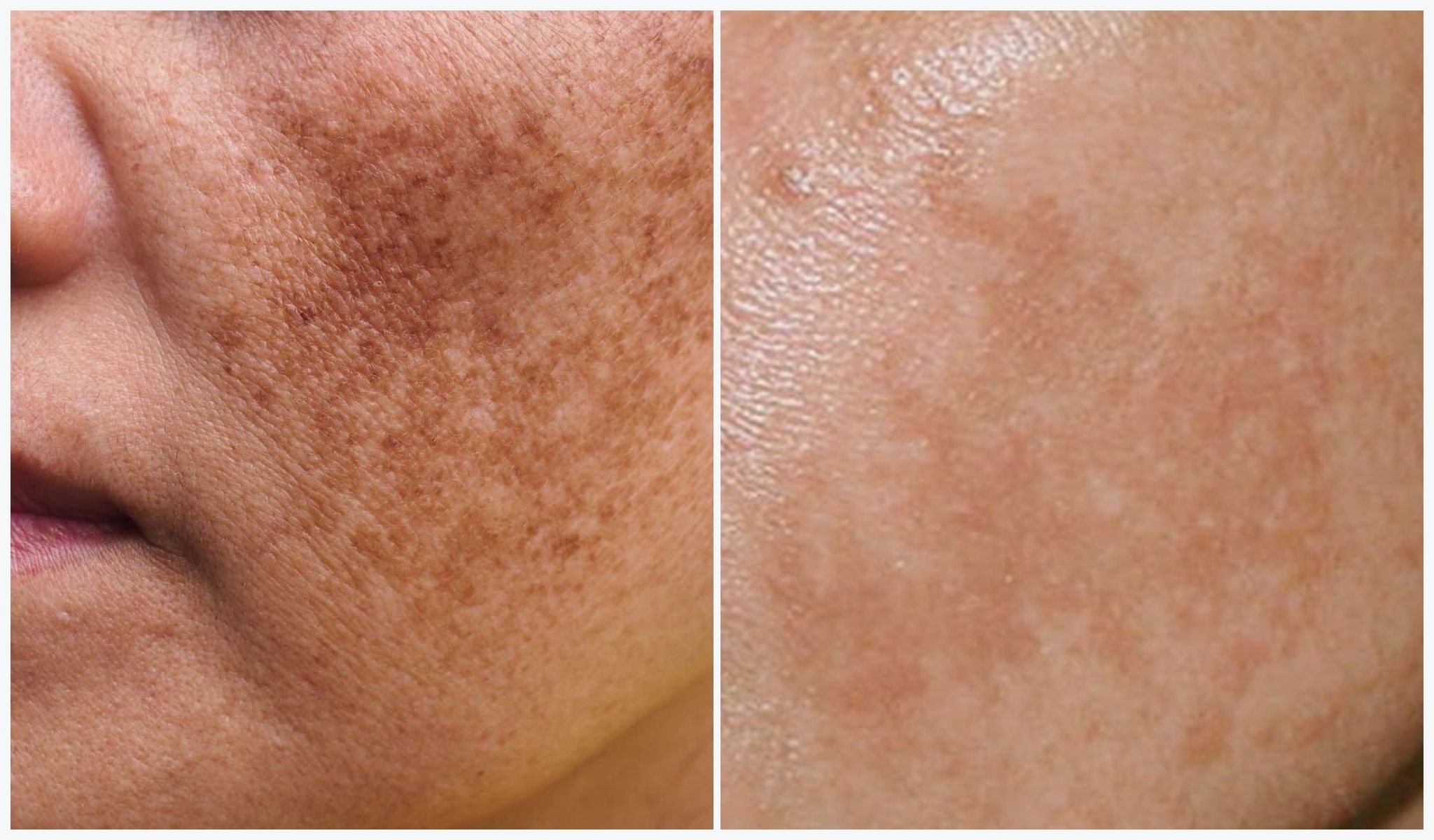MELASMA

What is Melasma?
Melasma is a common skin condition characterized by the development of brown or gray-brown patches on the face, particularly on areas exposed to the sun. These patches typically appear on the cheeks, forehead, nose, and upper lip, but they can also occur on other parts of the body that are frequently exposed to sunlight.
Melasma is more common in women than in men and is often associated with hormonal changes, such as pregnancy, birth control pills, or hormone replacement therapy.
Precautions and Treatment of Melasma
Melasma is primarily a cosmetic concern and does not cause any physical discomfort or health risks. However, it can have a significant impact on a person’s self-esteem and quality of life due to its appearance.
Here are some Precautionary Tips and skin Treatments to better manage the Melasma.
- Sun protection:
- Wearing sunscreen and protective clothing is crucial in preventing melasma from worsening.
- When outdoors, consider using an umbrella or wearing a wide-brimmed hat to shield the sensitive facial skin from harmful UV rays.
- Avoid Self Treatment: Avoid using unprescribed creams, lotions and gels. It can adversely affect the melasma and challenging to treat.
- Gentle Skin care: Use a mild, gentle cleanser to wash your face twice a day. Avoid harsh scrubs and exfoliants, as they can worsen Melasma.
- Moisturize: Keep your skin well-hydrated with a moisturizer that suits your skin type. Well-hydrated skin can sometimes help reduce the appearance of melasma.
Treatment options for melasma may include:
- Topical treatments: Dermatologists may recommend topical creams or gels that contain ingredients like hydroquinone, tretinoin, corticosteroids, or kojic acid to lighten the patches.
- Chemical peels: Chemical peels involve the application of a chemical solution to the affected skin, which causes the top layer to peel off, revealing new, lighter skin underneath.
- Microdermabrasion: This procedure uses a machine to exfoliate the top layer of skin, helping to reduce the appearance of melasma.
- Laser therapy: Some types of laser therapy can target and break down the melanin in the affected skin, gradually lightening the patches.
It’s important to consult a dermatologist for a proper diagnosis and personalized treatment plan, as the effectiveness of treatment can vary depending on the individual and the severity of the condition. Additionally, Melasma can be challenging to manage, and in some cases, it may not completely resolve. Maintenance of sun protection measures is often recommended to prevent recurrence.
